If you’re looking to learn how to play bass lines (and anything else on bass!) quickly, then this video is for you! In this lesson, I’ll walk you through 5 study areas that will help you learn bass lines in record time and we’ll also look at a learning habit that’s likely to hold you back.
How Do You Learn Bass Lines?
Let’s say you are going to learn a song and the main riff goes like this as shown on the stave and TAB below. You might have to learn it by ear, you might have the TAB or someone might have shown you, this doesn’t matter. You are looking to memorise that line so how do you this this fast? What’s your process?
You might look at the TAB, but your fingers on the frets you’re instructed to play while listening to the riff to get the rhythm. You try to match what you are seeing on the TAB to what you’re hearing in the riff.
The other common method is learning the riff by ear, but that’s still going to be the same process in terms of memorising those notes. The only difference is that you are hearing the notes, rather than working them on out from seeing them on a TAB.
I’m here to tell you that you can massively speed up that process and improve your overall musicianship by just approaching things from a different perspective. The key to this is memory and when it comes to music and bass playing, you want to work on laying down a good foundation.

What Do I See?
When I lean that riff, what do I see? To begin with, I see the Key of G Major and the four chords of G Major, E minor, C Major and D Major. I see those chords as: I, VI, IV, V in that Key and I see an outline of those chord tones, the roots, thirds and fifths.
I would see the notes on the fretboard and the notes with the rhythms on the sheet music as I play. I also see the fret number s as they correspond to those notes, but I see the NOTES first and foremost. I can also see the geometric patterns on the fretboard, in other words I recognise the shapes of the arpeggios and triads.
That sounds like an awful lot of information to get from just one short riff, but that’s what naturally comes to me when I set about learning a line. I’m not over analysing anything, this information is there for all to see. You just have to know what you’re looking at!
You might be thinking why is all this stuff important? Well, you don’t need to know this, but it will make a huge difference in how fast you learn anything new and it will build up your musical vocabulary so it’s worth giving this your attention.
You can learn a string of meaningless notes, or you can a familiar set of musical phrases that you understand with a strong connection to the harmony. So how do you go about learning this? Well here are 5 things that will help you.
Learning The Fretboard
Learning the notes on your fretboard will give you a massive boost in your abilities, knowing fret numbers is just not enough. This will help you navigate the musical map on your neck, the best way to this is actually reading music. Learning to read will help you learn where the notes are on your bass without really trying.
This can seem daunting and scary at first, especially when all you want to do is learn how to play your favourite songs, but it will stand to you in the long run. Sight reading not only helps you navigate the fretboard, it also helps you learn rhythms and supports your harmony and theory.
Another good way to learn the notes on the bass is to take a note and find it in multiple places across the neck. Find one note, let’s say C on the E string and see where else it appears e.g. it’s at the 3rd fret on the A string, 5th fret on the G string etc. Do this for all the notes either alphabetically or by using the cycle of 4th’s.
Scales And Keys
Many of you will already know a Major scale as a fretboard pattern, this is just one way to learn it, but it’s more than just a pattern. The Major scale is derived from a Major Key and by learning about Keys and all the relevant harmony in there, you’ll be able to unlock essential musical information that will help you learn songs fast.
By learning the chords within a Key will help you recognise the recurring chord progressions. Playing through them using triads is a great way to become familiar with this. Let’s take the Key of C Major for example, you can number the chords from this key as such: (i) C Maj, (ii) D min, (iii) E min, (iv) F Maj, (v) G Maj, (vi) A min and (vii) B min.
You can see the triads that appear in this riff as shown on the TAB and stave below.
Major Triad
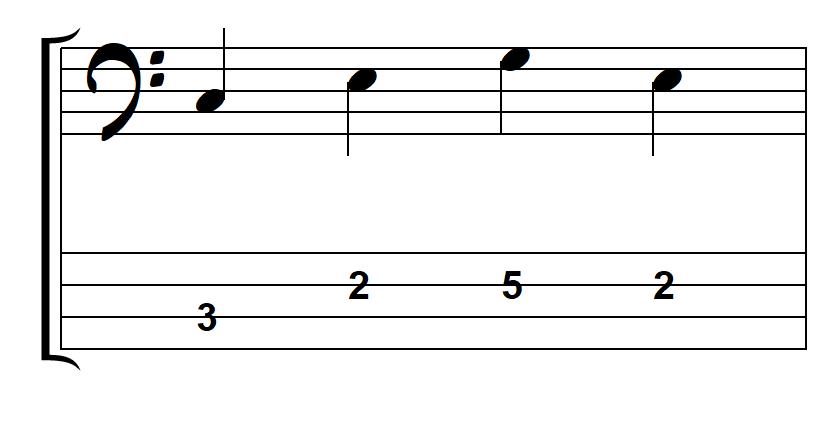
Minor Triad
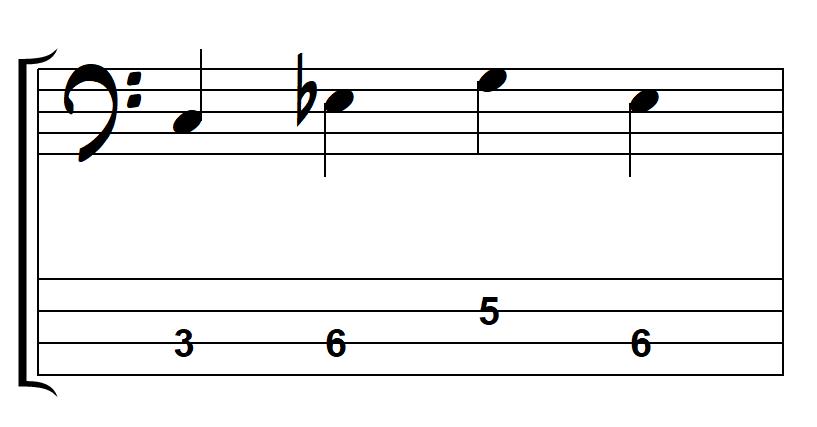
Intervals
An interval is the distance between two notes, these are the building blocks of all music. The intervals are typically organised as such: Root, 2nd, 3rd, 4th, 5th, 6th, 7th and 8ve. You can even go beyond the 8ve into the notes above, which are known as the extensions. I go into these in more detail in the video lesson above.
Chord Tones
These are some of the most important concepts you can learn as a bass player. Chord tones are simply the notes of a chord and you can play them melodically on a bass as arpeggios. I have a course on this vast topic called the Chord Tones Essentials course, which is an absolute deep dive into this crucial area. You can see these arpeggios shown as triads in the Major and minor triad examples above.
Learn Songs
This might seem really obvious, but some players spend more time on learning exercises than songs. But it’s learning songs that will bring together all the concepts we looked at here. The more songs and riffs you learn, the more recurring patterns you are going to see. When learning, try to learn them analytically, don’t just learn the notes. As you this you will develop a wider ranging vocabulary.


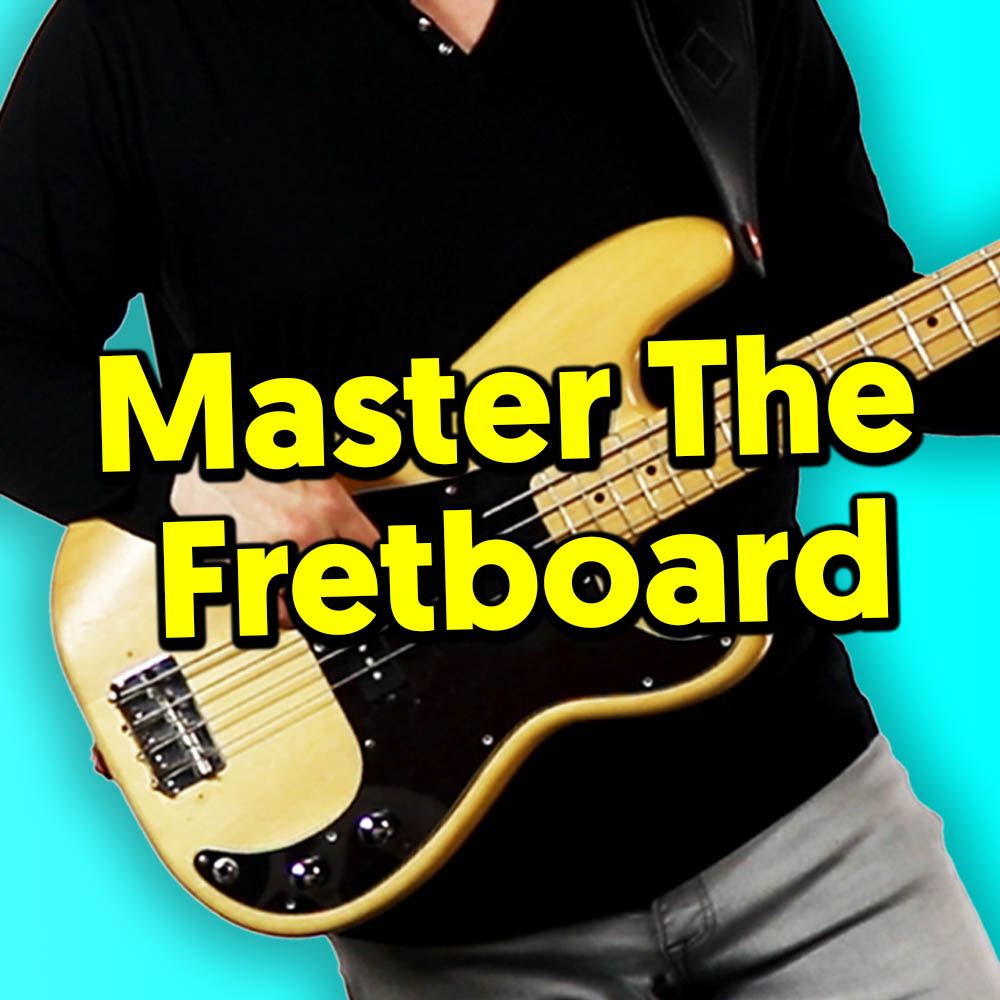

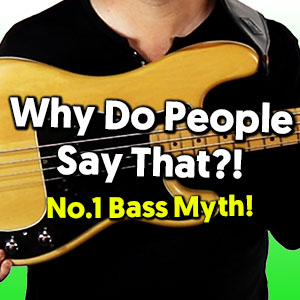




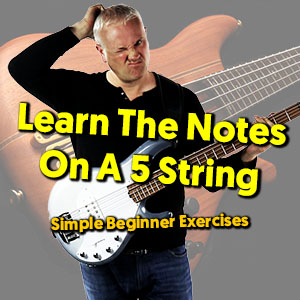

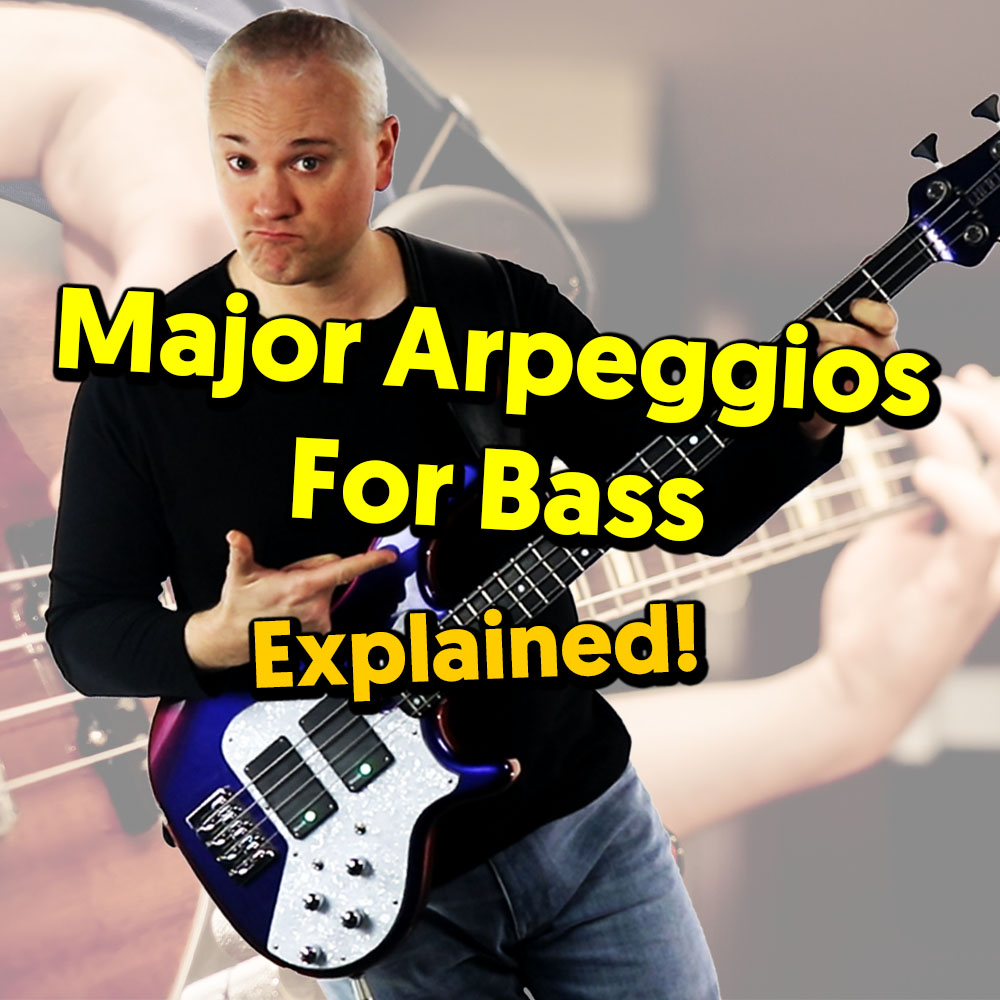
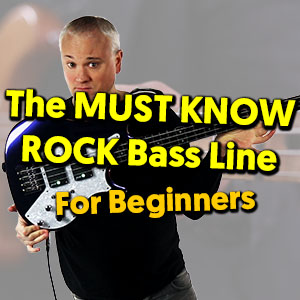
great content. great teaching style. no bring. thank you.
Great content, Thanks you sir! I am learning to play bass from your site.
Thank you for the information.